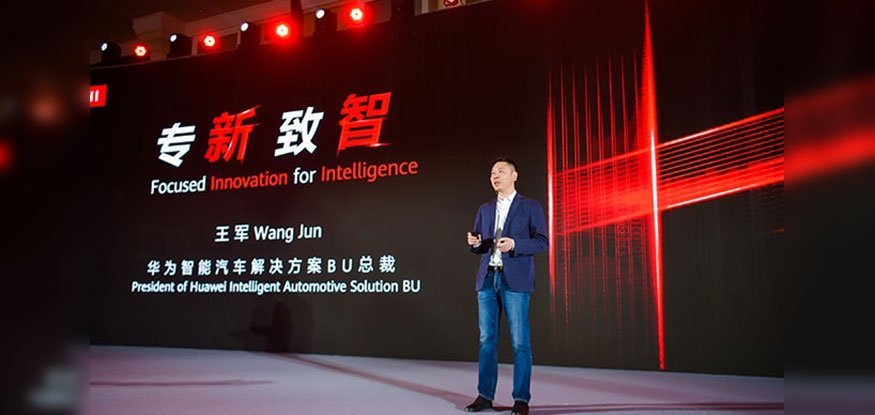As part of its $1 billion investment on researching self-driving and electric-car technologies, Huawei Technologies launched five automated-driving solutions, including one that uses its HarmonyOS operating system.
The basic and high-end Huawei HI versions of Arcfox's pure-electric Alpha S crossover sport utility vehicle mark Huawei's mass production of an automated driving system. They feature lidar, the radar-style light detection technology that is key to automating driving. As per Huawei's spokesperson, the vehicles could reach level 3, or "conditional driving automation," on a scale where level 5 requires no human interaction.
The launch follows the introduction of two versions of the Arcfox Alpha S, a premium electric vehicle co-developed by Huawei's intelligent automotive solutions business unit; and Arcfox, a unit of state-controlled automaker BAIC Group.
Both versions utilizes HarmonyOS, marking the company's debut in a vehicle.
With price tags of 388,900 yuan and 429,900 yuan, they carry Huawei's logo, in line with the diversification of the technology company's portfolio beyond smartphones and 5G network devices. The vehicles can run 708 km per charge. The Tesla Model Y sells for about 350,000 yuan and has a range of 594 km.
Besides BAIC Motor, Huawei is also teaming up with two other state-controlled automakers -- Chongqing Changan Automobile and Guangzhou Automobile Group -- to develop automated vehicles.
"We have established extensive cooperation with about 200 global automakers and industry partners," Wang Jun, president of the intelligent automotive solutions unit told reporters. However, he stated that Huawei would not build cars on its own but will only provide smart car solutions, including hardware components and software, to carmakers globally.
"If we can do well in vehicle parts, why do we need to produce cars?" inquired Wang.
Huawei's intelligent solutions center on a new computing and communications architecture that controls driving, connectivity, and the entertainment system, as well as cloud technology.
For example, the intelligent cockpit running on the HarmonyOS can transform the windshield into a 70-inch high-definition screen, enabling passengers to watch movies, play games and hold videoconferences. It operates like a smartphone ecosystem that allows users to connect to their favorite apps.
With U.S. company Tesla and homegrown rival Nio in the lead, sales of new-energy vehicles increased 11% to 1.37 million units in China in 2020 even as auto sales contracted 1.9% to 25.3 million units.
Huawei aims to join tech giants from Apple Inc. to Xiaomi in targeting the vehicle industry, betting future cars will grow increasingly green, autonomous and connected. EV sales in China may climb more than 50% this year alone as consumers embrace cleaner automobiles and costs tumble, research firm Canalys estimates. Huawei’s info and entertainment features can already be found in Mercedes-Benz sedans and the firm has teamed up with domestic players such as BAIC BluePark New Energy Technology Co. to develop smart car systems. The first model under its partnership with the Chinese EV maker, the Arcfox αS HBT, will be unveiled at Auto Shanghai in April.

